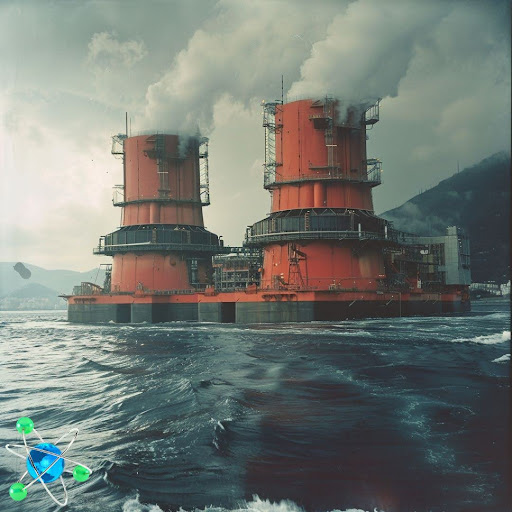
- Floating Nuclear Power Units (FPUs): Representing a groundbreaking leap in nuclear energy technology, FPUs offer stationary platforms dedicated to electricity generation, distinct from nuclear-powered vessels, with reactors specifically designed for maritime conditions.
- Advantages and Applications: FPUs provide scalable, environmentally-friendly power solutions for remote or inaccessible regions, boasting mobility, reliability, and reduced environmental impact compared to conventional fossil fuel plants. Their applications span from supplying electricity to coastal communities to supporting industrial facilities and infrastructure.
- Safety, Economics, and Global Impact: FPUs integrate advanced safety features, adhere to international maritime norms, and operate under unique economic models based on long-term Power Purchase Agreements (PPAs), driving global interest and demand for sustainable energy solutions. Russia leads in FPU development, with projects like the Akademik Lomonosov and ongoing plans to export FPUs worldwide.
Floating nuclear power units (FPUs) signify a transformative advancement in nuclear energy technology, distinct from nuclear-powered vessels. While both utilize nuclear reactors, their purposes differ significantly: nuclear-powered vessels are designed for maritime operations, whereas FPUs are stationary platforms dedicated to electricity generation and supply, relying on coastal infrastructure for mooring and electricity transmission.
Reactors for FPUs, such as the RITM-200, are specifically designed to meet the unique requirements of floating power generation. Although they draw from the technology used in land-based small modular reactors (SMRs), they incorporate modifications to suit maritime conditions. The RITM-200 reactors, initially developed for icebreakers, exemplify this adaptation, showcasing enhanced efficiency and reliability suitable for various environments, including marine, land-based, and floating applications.
FPUs are particularly valuable in remote or isolated regions where traditional power infrastructure is impractical or prohibitively expensive. Their deployment offers several benefits, including mobility, scalability, and a smaller environmental footprint compared to conventional fossil fuel plants. They also offer predictable electricity tariffs over long periods, making them economically attractive, and can provide heat to nearby facilities, enhancing their utility. An example of FPU deployment includes the planned installation of four RITM-200 units at the Baimskiy Mining and Processing Plant in Chukotka. Rosatom’s strategy involves exporting FPUs to various regions, particularly in Africa, South Asia, and Latin America, under a build-own-operate model.
Safety is a paramount consideration for FPUs. These units integrate both passive and active safety systems, ensuring high safety standards. The RITM-200 reactors benefit from decades of operational experience in nuclear icebreakers, emphasizing robust safety features designed to remain safe under a wide range of conditions. The operation of FPUs follows the “green field” principle, meaning there is no nuclear fuel handling at the operational site, minimizing local risks. All fuel operations are conducted at specialized facilities in Russia. Compliance with international maritime safety norms, such as the SOLAS Convention, is strictly adhered to, and the regulatory framework for FPUs, managed by Rostekhnadzor and the Russian Maritime Register of Shipping, ensures rigorous oversight.
Economically, FPUs operate under a distinct model compared to land-based nuclear plants. Instead of selling the units themselves, companies offer electricity through long-term Power Purchase Agreements (PPAs), providing predictable costs over the unit’s operational lifespan, which can extend up to 60 years. This model eliminates the host country’s need to handle nuclear fuel, following the green field principle, and reduces the necessity for extensive nuclear infrastructure.
Global demand for FPUs is rising, driven by the global energy deficit and the need for reliable power in remote regions. The international market potential for FPU-generated electricity is substantial, estimated at over 2.8 GW, with considerable interest from countries in the Middle East, Southeast Asia, Africa, and Latin America.
Russia leads in FPU development, with the Akademik Lomonosov already commissioned. The Baimskiy Mining and Processing Plant project will feature four RITM-200 units, serving as a significant reference for future FPUs. Additionally, technical design work for 100 MW FPUs based on the RITM-200M reactors is underway, targeting export markets with enhanced performance suited for warmer climates. Ongoing negotiations with various countries indicate a robust future for FPUs in addressing global energy needs.
In summary, FPUs represent a promising solution for sustainable power generation in remote and underserved regions. Their unique design, safety features, and economic model position them as a viable alternative to conventional power plants, contributing to the advancement of global nuclear energy infrastructure.
